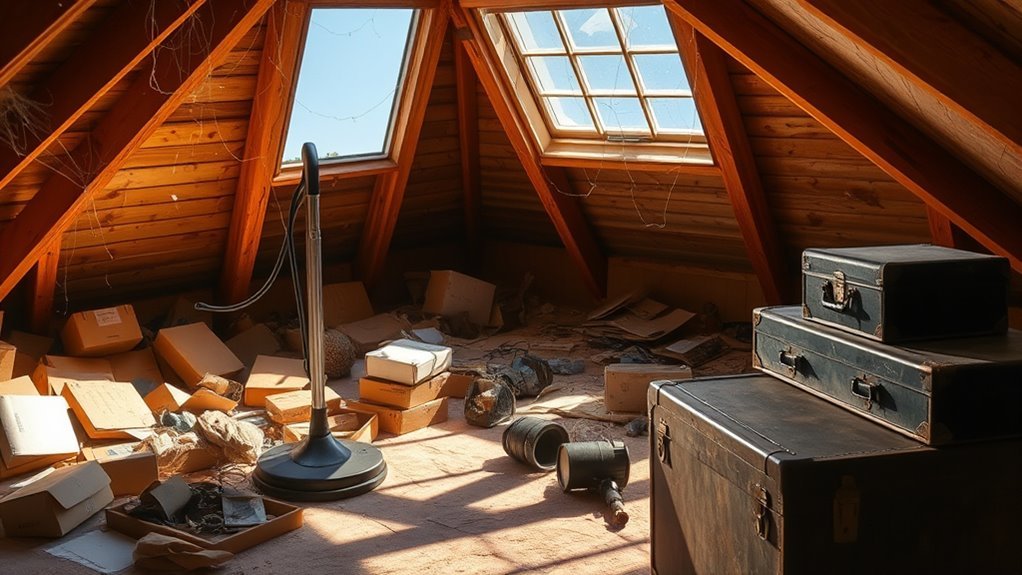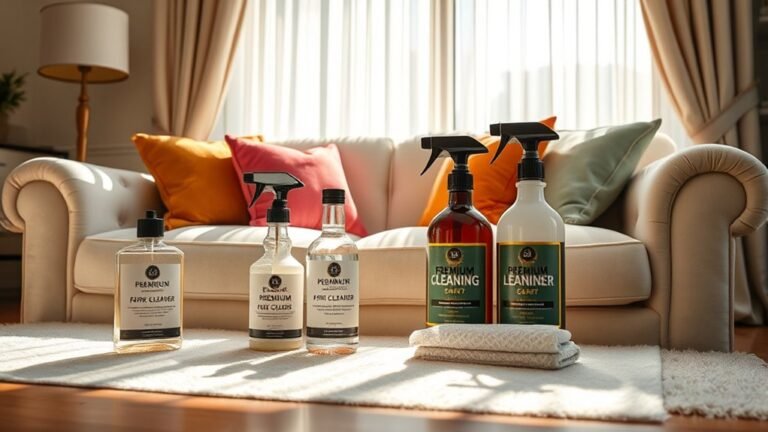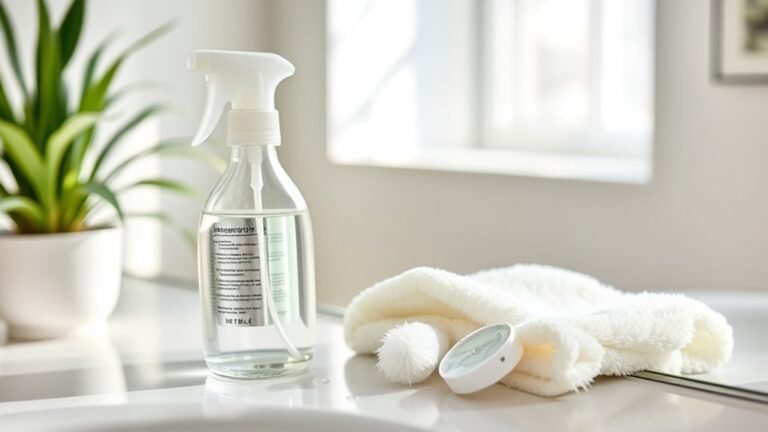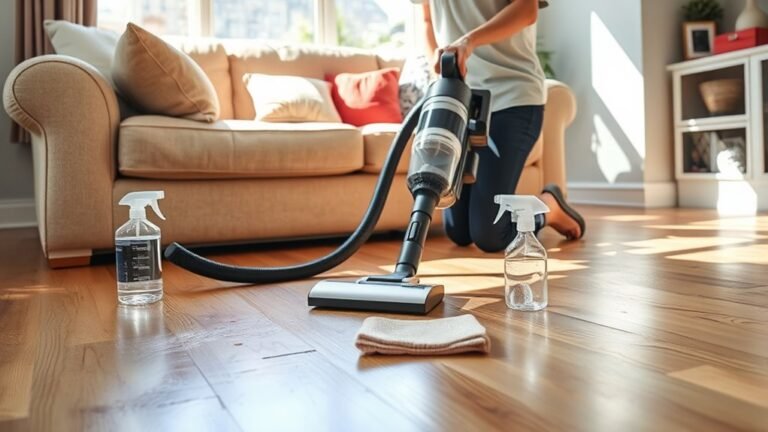Cleaning With Attic: What Works and What Doesn’T
When cleaning your attic, you’ll want to start by inspecting its condition to avoid safety hazards and hidden issues. Use protective gear and HEPA-filter vacuums for gentle dust and debris removal without damaging insulation. Address moisture and mold by improving ventilation and sealing leaks, while controlling pests with natural repellents and humane traps. Avoid harsh chemicals and skip nothing on your cleaning checklist. If you want to guarantee your attic stays clean and efficient, there’s more helpful info coming.
Assessing the Condition of Your Attic Before Cleaning

Before you begin cleaning, you’ll want to carefully assess your attic’s condition to identify any potential hazards or areas that need special attention. Start with a thorough attic inspection, looking for signs of leaks, mold, pests, or damaged insulation. This step guarantees you won’t miss hidden problems that could make cleaning unsafe or ineffective. Next, conduct a structural assessment to check the integrity of beams, joists, and floorboards. You want to be certain your attic can safely support your weight and any equipment you bring in. Taking the time for this evaluation gives you the freedom to clean confidently and avoid unexpected issues. A detailed attic inspection and structural assessment set the foundation for a smooth, safe, and effective cleaning process.
Essential Tools and Equipment for Effective Attic Cleaning
Before you get started, make sure you have the right protective gear to keep yourself safe from dust and debris. You’ll also need a reliable vacuum and sturdy brushes to tackle dirt effectively. Good lighting and tools to improve accessibility will make the whole process much easier.
Protective Gear Importance
Although attic cleaning might seem straightforward, you’ll quickly realize how essential protective gear is to keep yourself safe. Dust, insulation fibers, and possible mold spores can wreak havoc on your lungs and skin. You don’t want to compromise your freedom by falling ill or getting injured. Following strict safety protocols means wearing a proper respirator mask, gloves, goggles, and long sleeves to shield yourself from irritants and debris. Protective gear isn’t just about comfort—it’s your frontline defense. Skipping it might save time now but could cost you health later. So, before you plunge into cleaning, suit up properly and respect the risks. That way, you maintain control, protect your wellbeing, and keep your attic cleaning experience as liberating as it should be.
Vacuum and Brush Types
Choosing the right vacuum and brush can make your attic cleaning much more efficient and less tiring. You want vacuum types that handle dust without kicking it up, like HEPA-filter vacuums, and brush types that reach tight spots without damaging insulation. Having the right tools lets you move faster and breathe easier, giving you freedom from stubborn grime.
| Vacuum Types | Brush Types |
|---|---|
| HEPA filter | Soft bristle |
| Canister | Extendable handle |
| Lightweight | Stiff bristle |
| Cordless | Angled brush head |
Pick tools that match your attic’s needs, so cleaning feels less like a chore and more like reclaiming your space.
Lighting and Accessibility Tools
Since attics are often dim and cramped, having proper lighting and accessibility tools is essential for safe and thorough cleaning. You’ll want reliable attic lighting—think bright, portable LED lights that won’t overheat or drain batteries quickly. Good lighting frees you from guesswork, helping you spot dust, debris, or damage with ease. Accessibility ladders are equally important. Choose sturdy, adjustable ladders that fit your attic opening, offering stability and comfort as you climb up or down. This gear gives you the freedom to move confidently without risking injury or frustration. When you equip yourself with the right attic lighting and ladders, cleaning becomes less of a chore and more of a straightforward task you can handle on your terms.
Safe Removal of Dust and Debris in Attic Spaces
When you start cleaning your attic, it’s important to remove dust effectively to protect your health and prevent damage. You’ll want to use proper tools and techniques to capture dust without spreading it around. Also, knowing how to dispose of debris safely will keep your attic and home cleaner in the long run.
Effective Dust Removal
Removing dust and debris from your attic requires care to protect both your health and the structural integrity of the space. You’ll want to use gentle dusting techniques like microfiber cloths or low-suction vacuums with HEPA filters to capture fine particles without damaging insulation or wiring. Keep allergy considerations in mind by wearing a mask and ventilating the area well to avoid respiratory irritation.
Here’s a quick guide to help you:
| Dusting Technique | Allergy Considerations |
|---|---|
| Microfiber cloth | Wear N95 mask |
| HEPA vacuum | Ventilate attic during cleaning |
| Soft-bristle brush | Avoid stirring up dust too much |
This approach keeps your attic clean while giving you freedom from allergies and structural risks.
Debris Disposal Methods
After you’ve carefully loosened and gathered dust and debris in your attic, figuring out the best way to dispose of it safely is just as important. You want debris collection methods that keep your space clean without exposing you or the environment to harmful particles. Start by sealing debris in heavy-duty bags or containers designed for dust and small fragments. Consider your disposal options: some local waste facilities accept construction debris, while others may require special handling for insulation or hazardous materials. If you’re unsure, contact your local waste management service to learn about safe drop-off points or scheduled pickups. Choosing the right disposal option not only protects your health but also gives you the freedom to maintain a cleaner attic space without worry or hassle.
Best Practices for Handling Insulation During Cleaning

Although insulation might seem like just another dusty material in your attic, handling it carefully during cleaning is essential to maintain its effectiveness and protect your health. Different insulation types, like fiberglass, cellulose, or foam, require specific care to avoid damage or release of harmful particles. Always prioritize insulation safety by wearing protective gear—gloves, masks, and goggles—to shield yourself from irritants. Avoid compressing or disturbing insulation more than necessary, as this reduces its ability to regulate temperature. If you spot damaged areas, mark them for professional repair rather than attempting a DIY fix. By respecting insulation types and following these safety practices, you’ll keep your attic’s performance intact and enjoy peace of mind while cleaning.
Dealing With Mold and Moisture Issues in the Attic
Moisture problems in your attic can quickly lead to mold growth, which poses health risks and damages your home’s structure. You need to focus on mold identification and moisture control to keep your attic safe. Look for dark spots, musty smells, and water stains as signs of mold. Controlling moisture involves improving ventilation, fixing leaks, and using a dehumidifier if necessary. Here’s a quick guide:
| Problem | Solution |
|---|---|
| Mold spots | Clean with mold remover |
| Musty odors | Increase ventilation |
| Water stains | Repair roof leaks |
| High humidity | Use dehumidifier |
| Poor airflow | Add vents or fans |
Stay proactive to maintain a dry, mold-free attic and protect your home’s freedom from hidden damage.
Pest Prevention and Control Strategies in Attics

When pests find their way into your attic, they can cause significant damage and create health hazards. To keep your space free and safe, you need effective pest prevention and control strategies. Start by using reliable pest identification methods to know exactly what you’re dealing with. Then, consider these natural deterrent solutions to maintain freedom from chemicals:
- Seal all entry points like cracks and vents
- Keep the attic clean and clutter-free
- Use peppermint oil or vinegar sprays as repellents
- Set humane traps to catch rodents or insects
- Inspect regularly for signs of nesting or droppings
Improving Attic Ventilation to Maintain Cleanliness
Since stale air and excess heat can quickly build up in your attic, improving ventilation is essential to keeping the space clean and dry. You’ll want to focus on effective ventilation systems that promote steady air circulation, preventing moisture buildup and mold growth. Installing ridge vents, soffit vents, or gable vents can create a natural airflow, pushing hot, humid air out while drawing fresh air in. This balance helps maintain a comfortable environment and protects your attic’s structure. Remember, good ventilation not only keeps your attic cleaner but also extends your home’s lifespan and reduces energy costs. By taking control of your attic’s airflow, you’re embracing freedom from dampness and mess, ensuring a healthier, more efficient space above your head.
Avoiding Common Mistakes When Cleaning Your Attic
Proper attic ventilation sets a solid foundation, but cleaning your attic requires careful attention to avoid common pitfalls. If you want to keep your attic safe and tidy, steer clear of these mistakes. Use a thorough cleaning checklist to stay on track and make your process efficient.
Here are frequent errors to dodge:
- Ignoring safety gear like masks and gloves
- Skipping insulation inspection during cleanup
- Using harsh chemicals that damage materials
- Overlooking pest signs or leaving nests intact
- Neglecting to seal air leaks after cleaning
Frequently Asked Questions
How Often Should I Schedule Professional Attic Cleaning Services?
Imagine your attic like a secret garden where unwanted pests sneak in when you’re not looking. To keep it thriving, you should schedule professional attic cleaning services at least once every two years. This cleaning frequency helps prevent attic pests from settling and causing damage. If you live in a humid area or notice signs of critters, you might want to clean more often. Keeping your attic clean gives you the freedom to relax worry-free.
Can Attic Cleaning Improve My Home’s Energy Efficiency?
Absolutely, attic cleaning can boost your home’s energy efficiency. When you clear out debris and improve attic insulation, it prevents heat from escaping in winter and keeps your home cooler in summer. This means you won’t rely as much on heating or air conditioning, leading to significant energy savings. By maintaining a clean, well-insulated attic, you’re freeing yourself from high energy bills and creating a more comfortable living space year-round.
Are There Eco-Friendly Products Safe for Attic Cleaning?
You’ll find plenty of eco friendly solutions that tackle attic contaminants without harsh chemicals. These products use natural ingredients to break down dust, mold, and pests while protecting your home’s air quality. Choosing green options means you’re caring for your space and the planet, giving you freedom from worrying about toxic residues. Just be sure to check labels and pick ones specifically designed for attic use to keep things safe and effective.
What Are Signs of Structural Damage Found During Attic Cleaning?
Ever wondered if your attic is silently crying out? When cleaning, watch for water damage like stains or warped wood, which can weaken your home’s freedom. Pest infestations also spell trouble—rodents or insects leave droppings, chewed insulation, or nests. These signs hint at structural damage that could trap you in costly repairs. Stay vigilant, so your attic remains a safe, free space, not a hidden hazard.
How Does Attic Cleaning Impact Indoor Air Quality?
When you clean your attic, you reduce dust accumulation that can stir up airborne pollutants affecting your home’s air quality. By tackling this buildup, you help free your indoor air from allergens and irritants, making breathing easier and your space healthier. Keeping your attic clean means you’re taking control, ensuring the air you and your loved ones breathe stays fresh and unburdened by hidden contaminants.






